An 18th Century Covered Hat
This hat is part of a new 1775-1785 ensemble we're working on that will be premiered in a Threaded Bliss post in March. Until then, we'll offer you this teaser: a changeable silk covered hat. New to this "issue" of Threaded Bliss is also a detailed tutorial to aid you, gentle reader, in making your own fashionable accessory. Enjoy and let us know if you have any questions! And don't forget to let us see what you create!
The pattern: Straw hats can be covered in a variety of ways. One way is to trace a circular pattern directly from the hat and construct a pouch in which the hat is inserted; a smooth, flat surface on both sides of the hat, brim and crown, will be the result. This method is detailed by our friend Laurie of Teacups in the Garden in her post about the techniques she learned in a recent class at the Colonial Williamsburg Costume Design Center. Another method, described below, instead takes strips of fabric and fiddles with them by variously pleating, gathering, tugging, and smoothing until you achieve the look you like best! In other words, there is no "right" or "wrong" way to do a covered hat.
Inspirations: There are many period images of covered hats available online, along with a handful of extant examples. Here are a couple of our favorites and inspirations for our purple silk hat:
Catherine, Lady Chambers (Joshua Reynolds), 1756.
The top of the hat in the painting above (or at least the crown) appears to be pleated. The underside is covered in a different color silk, which is also used to form the poofs and the bow that decorate the hat's crown.
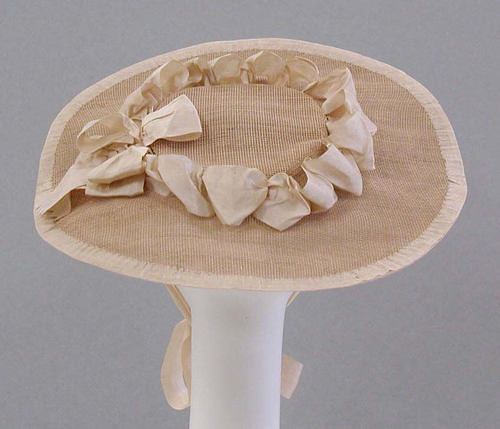
A covered silk hat from the Met Museum (acc. no. 1984.140), dating to 1760.
In this 1760 example, ribbon poofs and a big bow surround the low, wide crown of the hat. The brim is edged with matching ribbon, which also forms the ties. Be sure to visit this item's detail page because there's a great glimpse of the underside of this hat.
The Angelic Angler, 1780s.
This print above I love both because of the title and subject matter, and because it just shows what fun you can have with designing and decorating hats. This later style (1780s) uses different materials to decorate around the crown and the edge of the brim, and features the poofed top fashionable during that decade. And just for the record, I want her shoes.
Construction details: I have, at long last, remembered to take in-progress photos as I've worked on the hat, so to honor that achievement (small as it is!), I'll offer some step-by-step instructions on the "free-handed" method of hat-covering.
1) First, cut a square, circle, or rectangle to cover the crown of the hat. If you want pleats, go with the rectangle; if you're going for a gathered, poofy look, the circle is best, and if you want a smoother finish, do the square and treat it as you would a fabric-covered button (in other words, yes, a round crown CAN be made to fit into a square of fabric!). Finish the crown of your hat before you move on to the next step.
The completed crown, covered in a pleated strip of fabric
gathered at the center point. The edges are snipped so
that they will lie flat beneath the brim covering.
2) Next, cut a rectangular strip of fabric the width of your hat brim. Make it about a yard long to begin with, though you'll probably end up needing to add to it as you proceed with step three. If you want only the top portion of your hat brim to be pleated or gathered, then make the width of your fabric strip as wide as the top of the brim only (plus seam allowances, of course). If you want the underside of the brim to echo the top, you can either double the width of the strip so that it wraps fully around the edge of the brim to reach the underside of the crown, or do the top and the underside separately. It just depends on how much fabric you have to work with, and how fiddly you're in the mood to be. Doing the top and the bottom separately is a little easier when you're doing something like evenly-spaced pleats, I think. Of course, that being said, I did this example with a single strip that covers top and bottom, but that was just a personal choice. If you'd prefer a smooth underside, trace your hat to form a circular pattern, add seam allowances, and cut out the center hole where the crown will be.
The pleated strip of fabric, ready to be attached at the base of the crown.
3) Measure the circumference of your crown and add a comfortable seam allowance to that figure. Pleat or gather one side of your fabric strip to match that measurement. Play with the size of your pleats or the fullness of your gathers until you achieve the look you like best. Again, there really are no set rules with this!
4) Stitch the pleated or gathered strip around the crown. Don't worry about finishing the edges because they will be covered by trim.
5) Arrange your fabric from crown base to edge. You can do angled pleats like mine, straight and even pleats, pleats of different widths and angles mixed together, overlapped pleats - go with whatever your imagination suggests to you! If you've instead gathered your fabric around the crown, figure out the best tension for the fabric as it extends out towards the brim. Stitch down your pleats or gathers close to the edge of the brim. If you've done some elaborate or very tiny pleating, you can stitch them down in the center of the brim as well. Don't be shy about allowing your stitching to show; the 18th century (unlike the 20th and 21st) wasn't picky about it being visible, so your hat certainly won't be considered "sloppy" if we can see your stitches!
6) Complete the underside of your brim. If you want the bottom to mirror the top, repeat as above. If you've chosen to do a smooth underside, apply your circle at the brim edge and underneath the crown. If you've done your top and bottom separately, be sure to make your stitches close to the edge of the brim, where they can be obscured by trim.
The underside of the hat with the pleats pinned in place.
7) Attach your ribbon ties to the underside of your brim.
8) Decide on the trim to surround your crown and sew it down. You can do ruched trim (as in this example), knife-pleated or box-pleated trim, bows, loops, poofs, or simply leave the ribbon smooth and wrap it around. You can use matching or coordinating fabric, ribbon, braid, or flowers.
9) Cut a square a little larger than the size of your crown. Fiddle with this square until it lays smoothly inside the underside of the crown and stitch it down. You can cover the seam with ribbon if you like, or you can leave it exposed. Once it's on your head, of course, no once will see it, so it depends on how finished you personally need your projects to feel. I left mine plain with the stitching exposed (whatever that says about me!).
The completed underside of the hat, with the edges of the ribbons
secured beneath the crown's lining.
10) Decide on your trim for the edge of the brim. It can mirror the style or width of trim you've used for the crown, or it can be completely different. Once you're done with this, congratulations! Your hat is complete!
The fabric: A changeable purple and brown silk taffeta. The ribbon trim is milk chocolate brown satin in two different widths: 1" for the ties and the ruched crown trim, and 1/2" for the ruched edge trim. The wooden button is covered in a small square cut of ribbon. The hat blank is from The Silly Sisters.
Finishing the look: In the eighteenth century, a hat (covered or not) would have (almost) always been worn over a white cap. This particular hat was made to coordinate with a new quarter-back gown. One thing to remember when making and wearing silk-covered hats is to be sure the "fanciness" of your hat compliments that of your gown. A silk hat, for instance, would never be worn with a plain wool or linen gown, but rather would have been reserved for a silk or expensive cotton ensemble.
Additional in-progress photos can be found on this project's flickr set. Stay tuned for the gown and completed ensemble coming in a couple weeks!

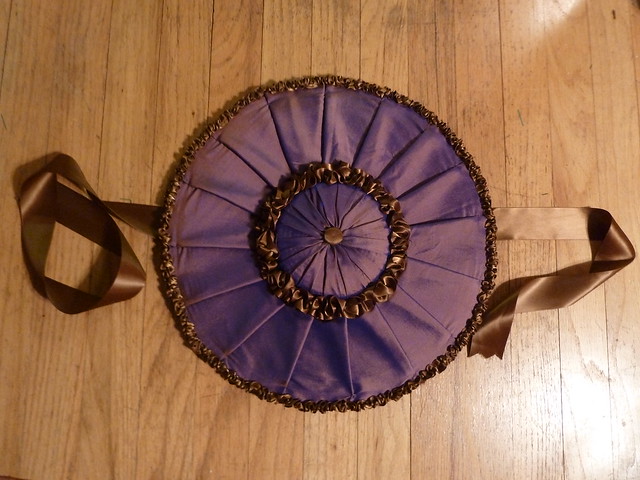
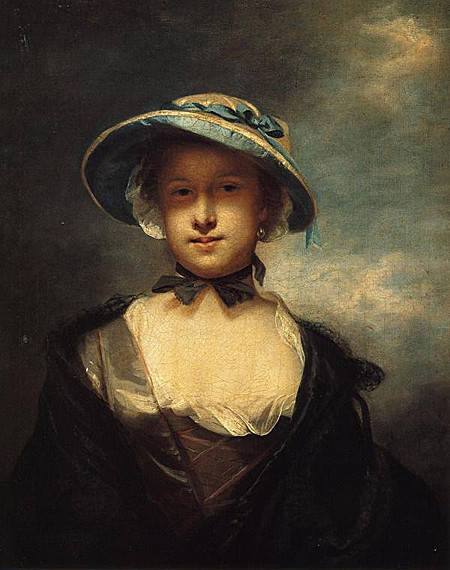

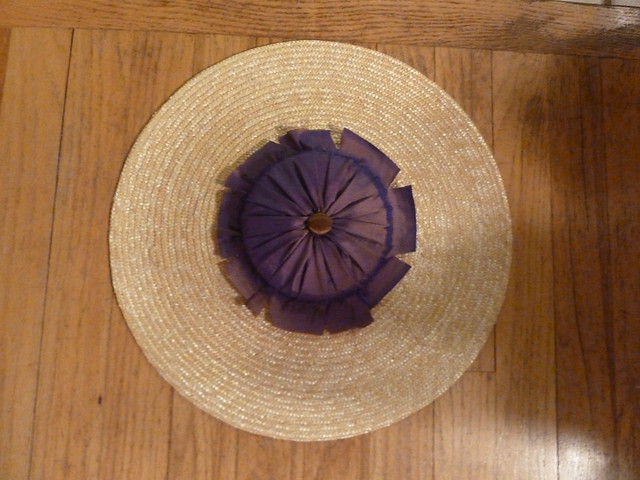
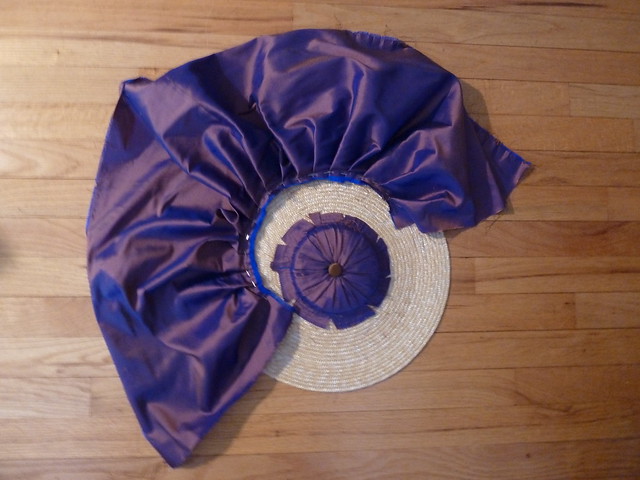
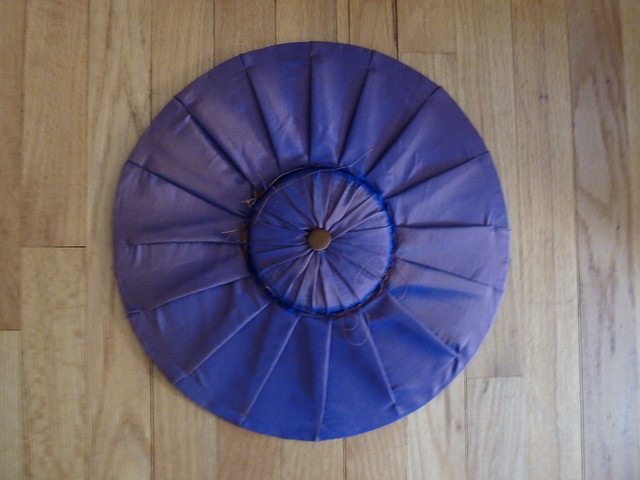
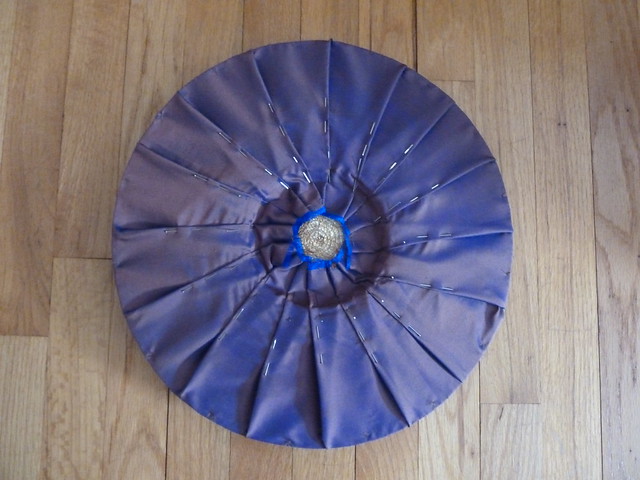
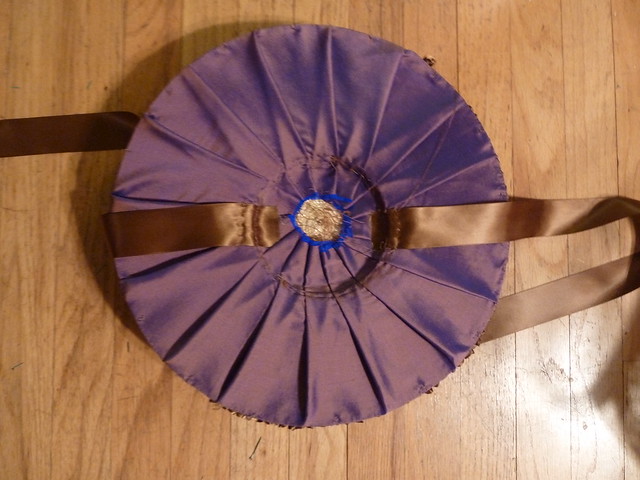

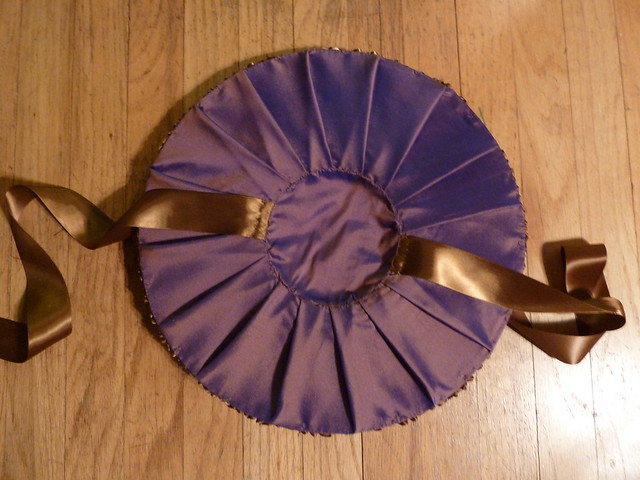
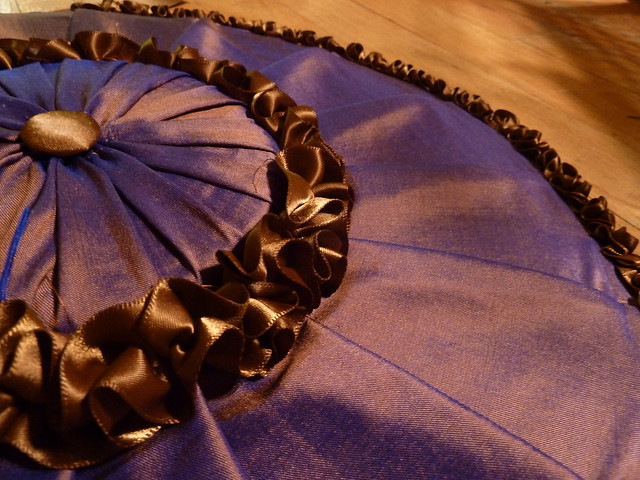
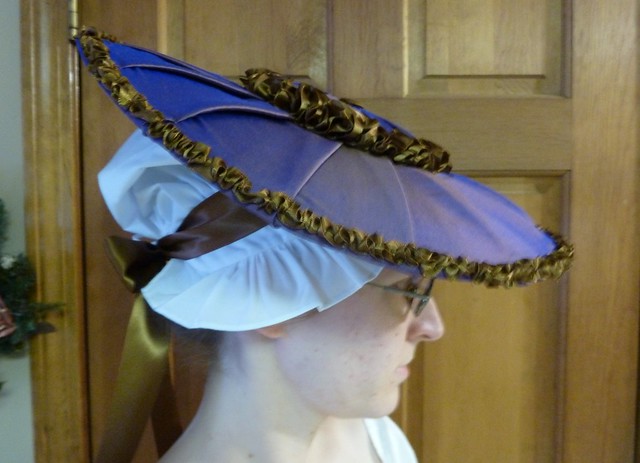
4 comments:
Fabulous tutorial! Thank you.
Beautiful! How did you figure out the pleating? Did you just play with the fabric? What a surprise that you mentioned me!
Laurie
You're welcome, Jenni! I'm very glad you found it useful! :-)
Laurie, yes, all I did was play around with the size and angle of the pleats until I found something I liked. I initially had lots of very teeny pleats, and the top was almost entirely finished before I decided I didn't like the look because it just seemed like too much going on for this kind of fabric. In a single, lighter color, it would have looked nicer, I think. So I unpicked it all and started again, and kept fiddling until I found a size I liked!
Thank you for this wonderful tute. I have a 18th century plain straw hat begging to be made into something beautiful.
Post a Comment